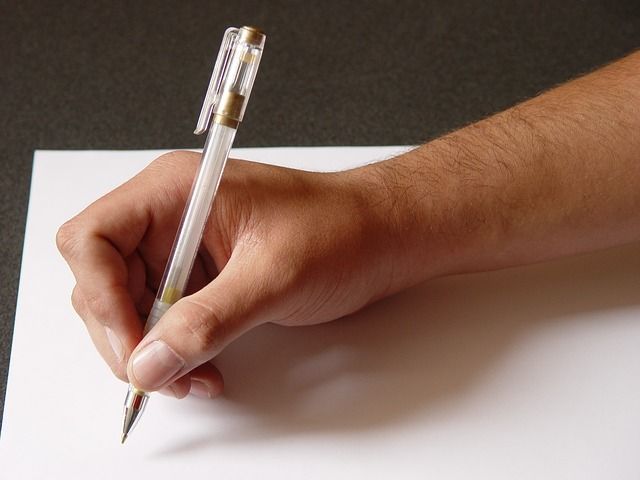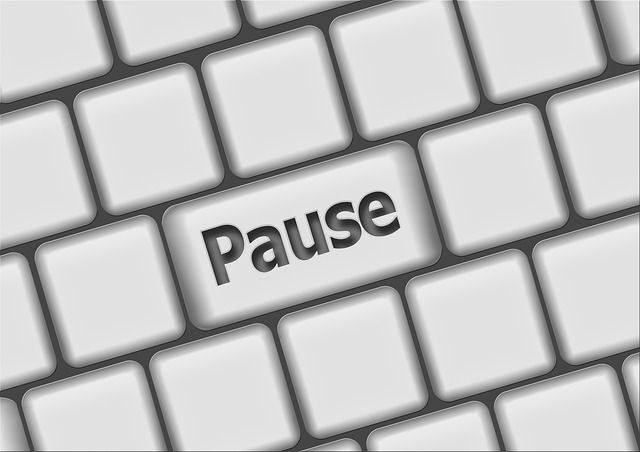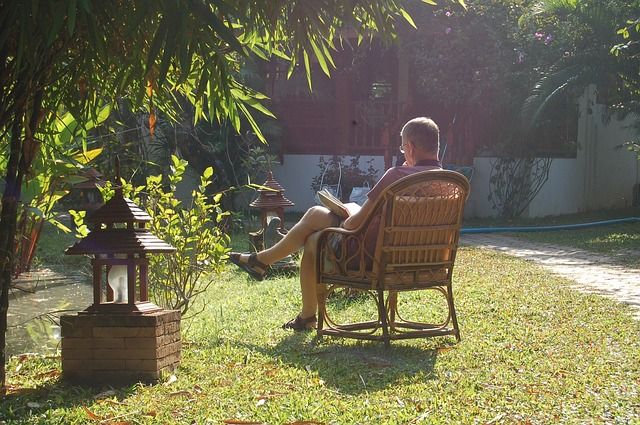Habits are hard to hack. Daily rituals are way easier.
You keep at something (good or bad) for several days in a row and it turns into a habit. You fall into the bad habits with ease. You have to go kicking and screaming into the good ones.
What if you had a placebo-type mechanism to trick yourself into adopting good habits effortlessly? You do. We all do. It's called a daily ritual. With a good habit, you have convince/coax/threaten yourself to take it on. But with a daily ritual you set an intention and "just do it". Think of it as a planned habit that serves a purpose, or a series of easy actions that work in the background to pave the way for a better day.
As busy Web workers, we struggle to work amid online distractions, wavering energy and motivation levels, and a weakness for procrastination. Adopting one or more daily rituals can help us find a rhythm to get things done despite our now-it's-here-now-it's-not discipline.
Where You Can Begin
A good daily ritual can — and is meant to — put you in a trance-like state where the world around you ceases to exist and you retreat to a place of intense concentration. It's called being in the flow or getting in the zone. In his book Flow: The Psychology Of Optimal Experience, Mihaly Csikszentmihalyi demonstrates how you can control this flow state and summon it at will.
Here are some starting points that you can draw inspiration from and create daily rituals to ground you no matter the ups and downs you're experiencing at any given point of time.
The Morning Ritual
Your morning ritual is not to be taken lightly. It can help you set the tone for your day and give you the motivation to finish quite a bit of work before the rest of your household wakes up. Getting that morning routine right takes some experimentation. Begin with one or more of these highly recommended activities to see which of them works for you.
- Recline in an easy chair, a cup of steaming coffee or tea in hand, and watch the sun rise.
- Review your tasks for the day as you drink an energizing green smoothie.
- Try a 7-minute workout.
- Read an inspiring quote or two to give yourself a positive, forward-looking mindset for the day.
- Write without editing. Typing away in a distraction-free environment or writing furiously in longhand can reveal several thoughts that you didn't even know lived inside your brain. These can be the source of ideas for future projects, forgotten tasks, etc.
- Read about one great person with an inspiring work and life ethic. Use that information to spur yourself to make the best of what lies ahead.
- Say a simple prayer. Counting the things that you're thankful for will put your problems in perspective and make you appreciate the day stretched out before you.
Come up with a few activities of your own to add to your morning ritual. Do remember to start small. Over a period of time you'll find yourself settled into a nice rhythm that leaves you eager to begin work.
Shower Therapy
Whether you're just starting your day or looking back on it, there's nothing more rejuvenating than a shower. Standing under a hot spray can wash away all your fears and stress, if only temporarily. Even a cold shower works, by making you instantly alert and even boosting your immunity in the long run. Ask those who have tried cold shower therapy, made popular by the "Impossible" guy, Joel Runyon.
Email Elimination
Email is a productivity killer, but it can also bring a semblance of routine and normalcy to your day, if you stay in control of your inbox.
When you're waiting for your computer to boot or the kettle to boil, scan your inbox and take note of the subject lines. Delete anything you're not interested in and move the ones that need your attention to a separate folder.
Don't open any of the emails. Don't compose a new one. Don't reply to an old one. Scan and sort. That's all. Doing this will lessen the urge to know what your inbox holds. Go back much later and deal with the emails accumulated in that special folder. With email out of the way, you can focus on work.
The Breathing Break
Utilize the time in between tasks to bring your attention to what's going on in and around you. Breathe deeply. Feel the ground beneath your feet. Flex your fingers and toes. Close and open your eyes a few times. These simple body movements coupled with deliberate awareness of your surroundings center you. Practice this ritual everyday and you'll find yourself responding more calmly in stressful situations.
Action Alfresco
Cooped up as we stay in enclosed spaces, often with artificial lighting, we sometimes forget that there's a world beyond our caves. But the minute we step outside, we come face to face with our physical connection to the world. It's important to make active use of that connection, because it invigorates us as nothing else can.
Take a brisk walk. It will clear your head right away, put a spring in your step, and bring you ideas and solutions that eluded you when you were sitting at your desk. Reconnect with nature in big ways and small. Plan weekend getaways that involve fun outdoor activities. You'll get something to look forward to as well as the impetus to wrap up work early.
Think of these activities not as time away from work, but as time spent in preparation for faster, higher quality work, because that will be the outcome when you return to your desk refreshed.
Passive Meditation
We see repetitive chores like washing dishes, vacuuming, etc. as something unpleasant to get over with. But if we change our perspective slightly, we'll see that these chores put us into a meditative state and are actually soothing. Use the time you spend on chores around the house to reflect on your day and your work. A lot of mental exercise is accomplished when you're away from your work space and in the midst of something mundane.
The Mental Trip
Daydreaming is often considered a waste of time. Calling it wool-gathering makes it sound worse. I, for one, think daydreaming is underrated and would recommend that you indulge in it for some time everyday.
When you let your body melt and your mind take over, the latter can produce some startlingly creative ideas, images, and insights that are hard to come by when you're at your alert best, sitting with a pen and paper in hand. Of course, there will be some useless thoughts too, but you can filter those once you emerge from your daydream.
Turning such a mental trip into a daily ritual helps program your brain to come up with ideas on cue. All you have to do is lie back and let your subconscious mind do all the work.
The Nightly Review
At the end of each day, spend five minutes taking stock of your projects. Instead of dwelling on what you have left unfinished, focus on what you have finished. That way, you'll go to bed satisfied instead of stressed. You can worry about the incomplete tasks when you're writing your to-do list in the morning.
Famous People, Daily Rituals
Rituals, which sometimes take the form of superstitions, act as triggers for the flow state that follows. Stephen King captures the purpose of a ritual in his book On Writing: A Memoir Of The Craft.
Your schedule — in at about the same time every day, out when your thousand words are on paper or disk — exists in order to habituate yourself, to make yourself ready to dream just as you make yourself ready to sleep by going to bed at roughly the same time each night and following the same ritual as you go.
The Web is strewn with intriguing stories about famous creatives whose dedication to (often eccentric) routines has enabled them to create awe-inspiring work. Here are a few examples:
- For dancer Twlya Tharp, her early morning cab ride to the gym has turned into a ritual, one she sees as a reassuring act of self-reliance.
- Every morning, at around seven, poet and novelist Maya Angelou headed to a sparsely furnished hotel room to get her writing done.
- Here's what Steven Pressfield says about his daily ritual in his book The War Of Art:
I get up, take a shower, have breakfast. I read the paper, brush my teeth. I've got my coffee now. I put on my lucky work boots and stitch up the lucky laces that my niece gave me. I head back to my office, crank up the computer. My lucky hooded sweatshirt is draped over the chair, with the lucky charm I got from a gypsy for only eight bucks. I have my lucky nametag that came from a dream I once had, and I put it on. On my thesaurus is my lucky cannon that my friend gave me. I point it toward my chair so it can fire inspiration into me. I say my prayer, invoke the muse, and I sit down and plunge in.
If you're interested in learning more about the daily rituals of various artists, past and present, Mason Currey's book Daily Rituals: How Artists Work is a good place to start.
Push The Right Buttons
Daily rituals have a calming effect on your mind. In an ever-changing world, they give you a sense of control and comfort, especially in times of stress. On good days and bad, they help you focus on the here and now, and put you in the right frame of mind to do what needs to be done. For all these reasons and more, it's vital that you work on crafting a ritual for yourself.
Which activity puts you in the zone? Have you turned it into a daily ritual yet?
Image Credits: Couple running Via Shutterstock, Derivative of Celestine Chua via Compfight cc










